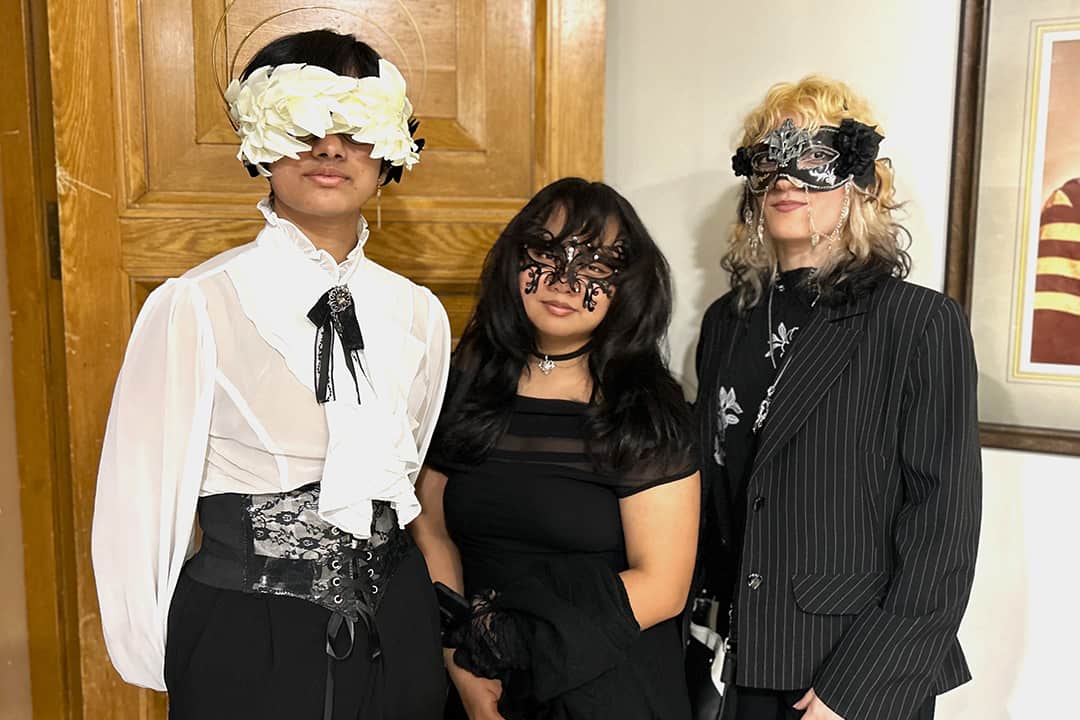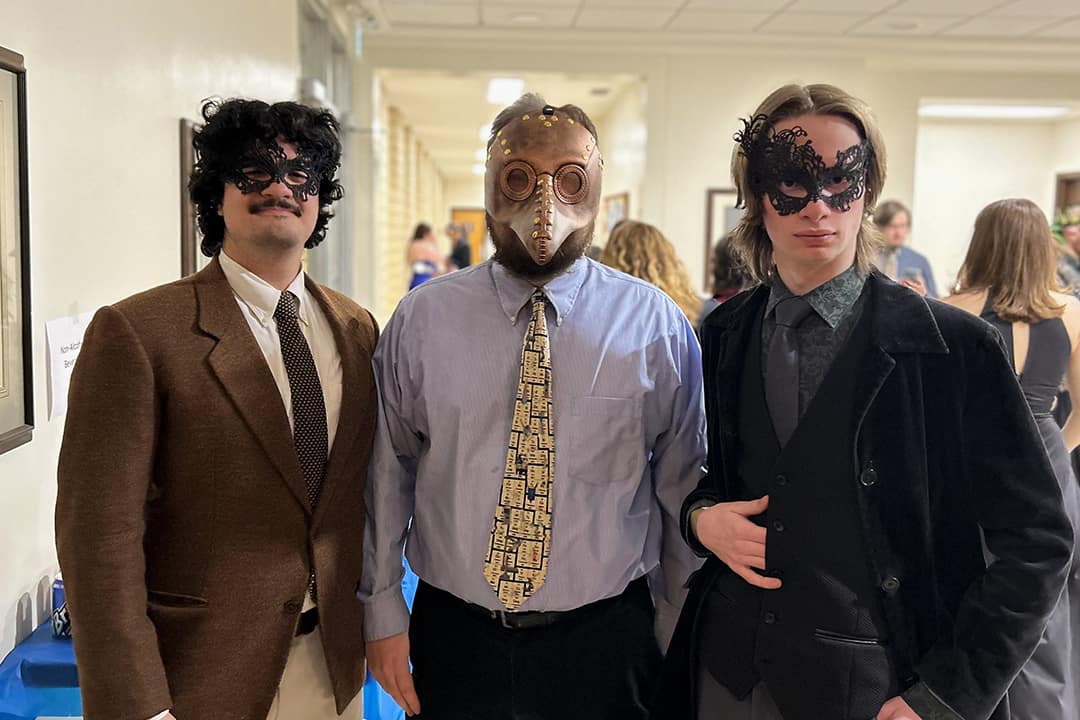Right before the first wave of deadlines began to loom on the student body, the Medieval Studies Undergraduate Society (MSUS) and Celtic Studies Course Union (CSCU) held a whimsical and lively masquerade ball on January 19. Hosted at Father Madden Hall, the event attracted many enigmatic creatives and academics to a fashionable night of dancing, socializing, and feasting.
This year’s masquerade ball was a collaboration and promotion by the MSUS and the CSCU, in addition to the Book and Media Studies Student Association, bringing back a traditional event for its second year post-pandemic.
The ball is a return in more ways than one, reviving a unique social atmosphere lost to students in isolation and bringing seldom-observed cultural activities to our modern, busy lives. Over 100 people attended the ball, with formal outfits creating a diverse sea of colour and artistic expression.
Masquerade balls date back to Italy in the twelfth century as a carnival designed for guests of different social classes to socialize, but remain anonymous. In the Italian Renaissance, masks continued to allow people to hide their identities at social gatherings. Most famously, the masquerade ball appears in Shakespeare’s Romeo and Juliet, where the lovers meet and fall in love at a masquerade ball without knowing each others’ identities. Hiding one’s face is intended to free people from judgement; a party of mystery and intrigue, separate from the exterior world of social custom.
U of T students rose to the occasion and did history justice. Some guests even took the time to create their own accessories. “I had a lot of fun putting together my outfit and, from what I’ve seen so far, I have a feeling there’s a good number of people who also had a lot of fun putting together theirs!” Alex Johnson, a student who had made his own mask, told me.
The vibrancy and cheer going around showed that, indeed, the ball had awoken many people’s creative side. From long flowing dresses and flower crowns to gothic suits and feathered Venetian masks, people put their best foot forward and created an atmosphere that was both fancy and giddy with excitement.
Though there was plenty of fun to be had, a lot of work went into creating such a magical night. When I spoke with Natalie Boehmer, the president of the CSCU, we discussed the importance of creating a community around the programs; many people aren’t even aware of the existence of programs such as medieval studies, Celtic studies, and book and media Studies, but would potentially be interested in taking related courses.
“I hope that [the ball] continue[s] to be a fun way for students to meet, make connections, meet other students and get a sample for the programs,” said Boehmer. After all, what better way to promote an interesting major than with a whimsical ball?
Beohmer also discussed some of how the masquerade ball is meant to capture the cultural essence of Celtic studies. And it absolutely did: though chaotic and giggly, a large crowd came together on their feet in Father Madden Hall to dance the ‘Orcadian Strip the Willow,’ a Scottish country dance.
It was truly special to see so many people come together enthusiastically: “Yes, you’re participating in Scottish culture and Scottish music, but also it’s just really fun dancing; it’s something that everyone can appreciate,” said Boehmer before the ball.
So, what does this type of event mean for the U of T community? Naturally, everyone could use a little more fun and relaxation, but arts and culture is about more than fun; cultural revival has a particular value. I was taken aback by how people seemed happy to join the dancing and socializing, without the usual reservations. Creative events are special because they encourage self-expression in a world that expects constant conformity; guests were encouraged to “wear whatever makes you happy” by the initial social media posts, and people did more than that.
Cultural revival is not always about the culture it revives, but perhaps the culture it creates. The highly successful masquerade ball made it clear that the student body is craving more art, dancing, and community. The ball can serve as an example for future cultural participation from students: we could all use a bit of inspiration.
The masquerade ball is an annual event, so if you missed it this year, be on the lookout next January!




No comments to display.